Fishing for perch with live bait is one of the most effective ways of catching this predator. Perch love all kinds of smaller live baits and there are a few really great rigs that can help you catch more and bigger perch.
The very best live bait rigs for perch include the float rig for the upper and middle water levels, as well as the paternoster, running and maggot feeder rig for the lower water levels and for fishing directly on the bottom. You can present both baitfish, worms or maggots with these rigs.
Continue reading this article to learn everything about these highly effective and very simple live bait rigs.
Float Rig
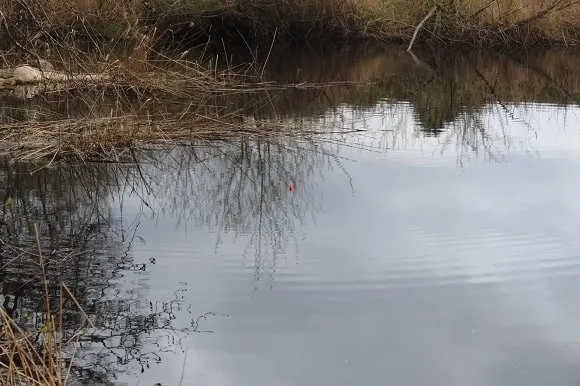
When fishing close to the surface or in midwater, the simple float or bobber rig is your best option when live bait fishing for perch.
Apart from being extremely fun, the float rig also lets you cover a lot of water, as it allows the baitfish to swim around freely, which also gives it a very natural presentation.
Additionally, you can pitch your bait into difficult, snaggy areas or right under overhanging trees and bushes, which often are hot spots for perch.
Nothing beats that feeling you get when seeing a slowly moving float that’s suddenly and violently being pulled under!
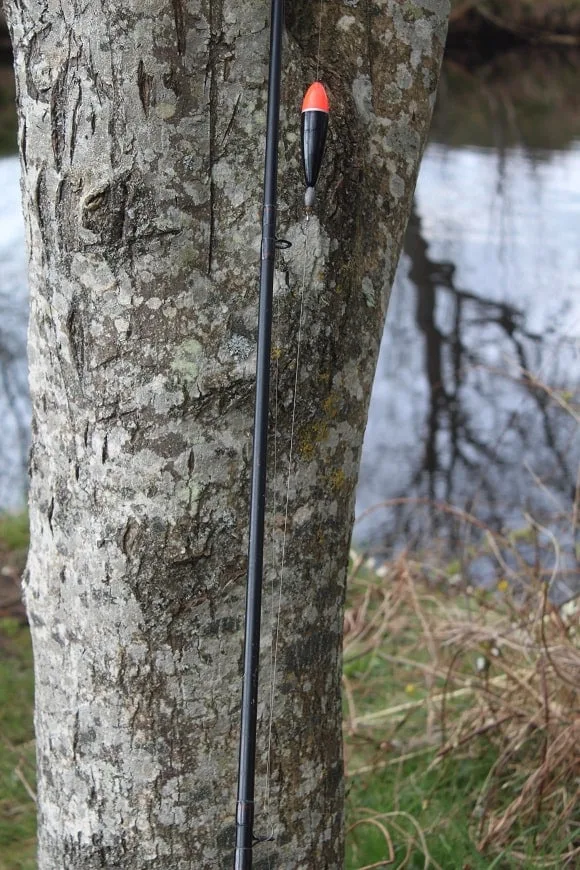
The way you set up a float rig for perch couldn’t be simpler; all you really need is the following tackle:
- float or bobber stop
- float or bobber of 4-8g
- a ball weight or egg sinker of 2-5g
- a stop bead
- a #8-#10 swivel
- a fluorocarbon trace or leader of 12-15lb
- a #2-#6 wide gape hook (depending on the size of your baitfish)
And that’s all, really! Often when it comes to fishing, simple is best, and the float rig is no exception!
Paternoster Rig
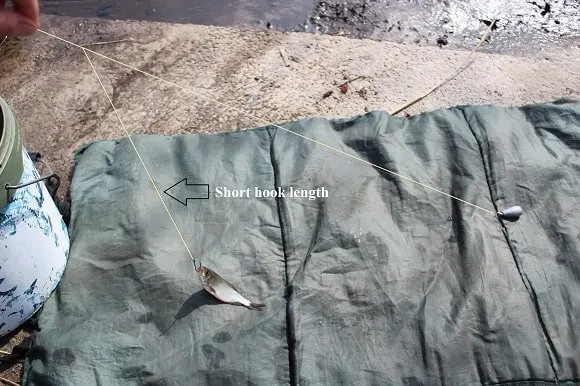
Now we are moving on to the best bottom rigs for perch. My absolute favorite is the paternoster rig. Once again, this is a really simple setup that nonetheless is highly effective and has caught me a lot of really big perch over the years.
It’s really up to you which way you want to set it up; you can either tie the hook to the end of your mainline and the weight to the shorter paternoster arm, or vice versa!
I much prefer to have the weight on the mainline and the hook on a somewhat shorter hooklength. This way, I can get the baitfish a little off the bottom when tightening down my mainline.
I just always get the impression that the baitfish remains far more active like that compared to when it’s on the long end of the rig and being able to rest on the bottom. The extra movement usually triggers a bite!
Here’s the end tackle you will need for the paternoster rig:
- A pear weight/sinker of around 1oz
- a 12-15lb fluorocarbon hook length/leader (tie it to your mainline with a blood or Albright knot)
- a #2-#6 wide gape hook
RELATED ARTICLE: Do you want to upgrade your perch gear for the next season? Here are some tips for suitable perch fishing reels that you might find useful!
Running Rig
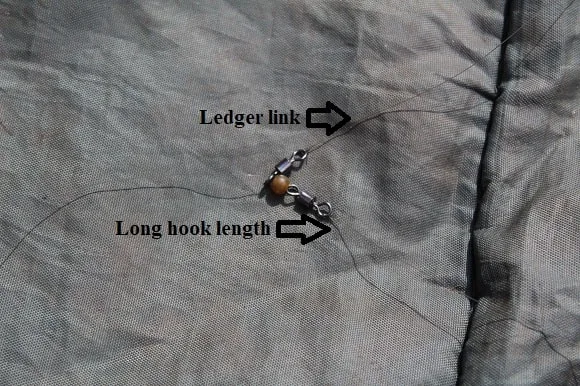
This is another really awesome live bait rig for perch, which has more sensitivity to it. As you can see in the picture, the ledger or sinker link is attached to a swivel, which, in turn, can run freely up and down your mainline.
This creates absolutely no resistance to the perch when it picks up your bait, which can be a huge advantage when fishing venues in which the perch are generally careful biters, or in cold water conditions when the perch are slower and do not feed as much.
A trusted tactic of mine is to start fishing with the paternoster rig, and if the perch are playing hard to get, I’ll switch over to a running rig. One or the other usually does the trick!
The end tackle you’ll need for the running rig is the following:
- 2 #8-#10 barrel swivels
- a stop bead
- a 12-15lb fluorocarbon hook length/leader
- a short length of monofilament line for your ledger/sinker link (make it thinner than your mainline and hook length, so that you’ll only use your weight if you should get snagged)
- a #2-#6 wide gape hook
Maggot Feeder Rig
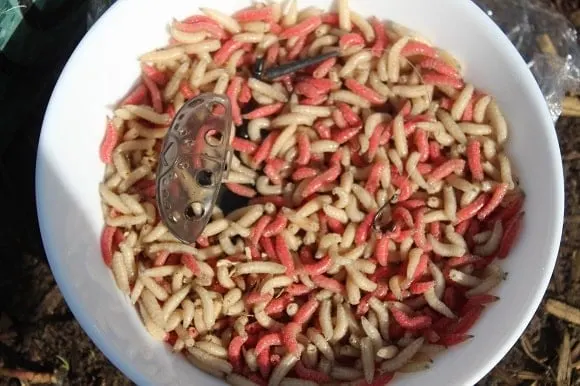
And finally, my secret live bait rig for winter perch; the maggot feeder rig. Using maggots can be highly effective when the water you’re fishing is extremely cold during winter and the fish aren’t really into feeding at all.
In such conditions, live baitfish just won’t cut it, because their size is simply too big and they move around far too much. Both of these factors equal more energy that the perch will have to use in order to grab those baits.
Maggots are a far easier prey now! They are small, they can’t swim away from the perch, and they contain a lot of protein. All that makes them the perfect cold water bait for perch (or any other coarse species, really).
Here is what you need to set up the maggot feeder rig:
- 2 float stops (to trap your hook link with)
- a #10 barrel swivel
- an anti-tangle sleeve
- a shorter fluorocarbon hook link of about 3-4 inches
- a 1oz maggot feeder
Pro Tip: When you start your winter session, start by casting out 4-5 filled maggot feeders to activate your swim. Then, start fishing and reload with fresh maggots every 15-20 minutes or so, or after each bite you get.
Best Live Baits for Perch
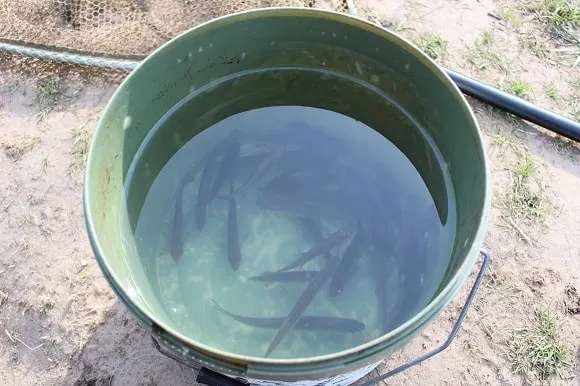
Perch like all kinds of smaller live baits and there are quite a few to choose between. And while they can all land you a lot of big perch, some just work better than others, depending on the day, the weather and the natural food that’s available to the perch in the water you are fishing for them.
That’s why trying out different baits is always key to success when the fishing is slow or the bites suddenly stop. All of the below-mentioned live baits will work great on both the float, paternoster and running rig (the maggots are best fished in combination with the maggot feeder rig, of course).
Here is a list of my absolute favorite live baits for perch:
| UK | US/CAN |
| Minnow | Minnow |
| Roach | Shiners |
| Rudd | Nightcrawlers |
| Bleak | Euro Larva (Maggots) |
| Worms | |
| Maggots |
RELATED ARTICLE: Make sure to also read this in-depth article on the best weather conditions for perch fishing
When it comes to baitfish size, I’ve found that fish of 3 to 5 inches are perfect for perch of all sizes. No matter if they can be found naturally in the water you target or not, all types of baitfish always tend to be the number one bait for perch, especially for the bigger ones.
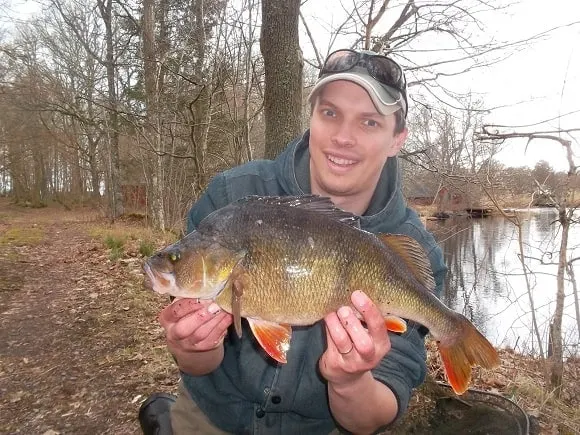
With that said, smaller live baits, such as worms or maggots tend instead to produce more bites in really cold water. This is probably due to the fact they’ll move around far less than nervous baitfish when a perch approaches, which means that the perch will have to sacrifice way less energy in order to catch the bait.
But as I mentioned above, experimenting with different baits is always the best and surest way to get the perch onto your hook. Perch are tricky fish, and what works on one day can be absolutely worthless the next time you fish the exact same swim!


Leave a comment